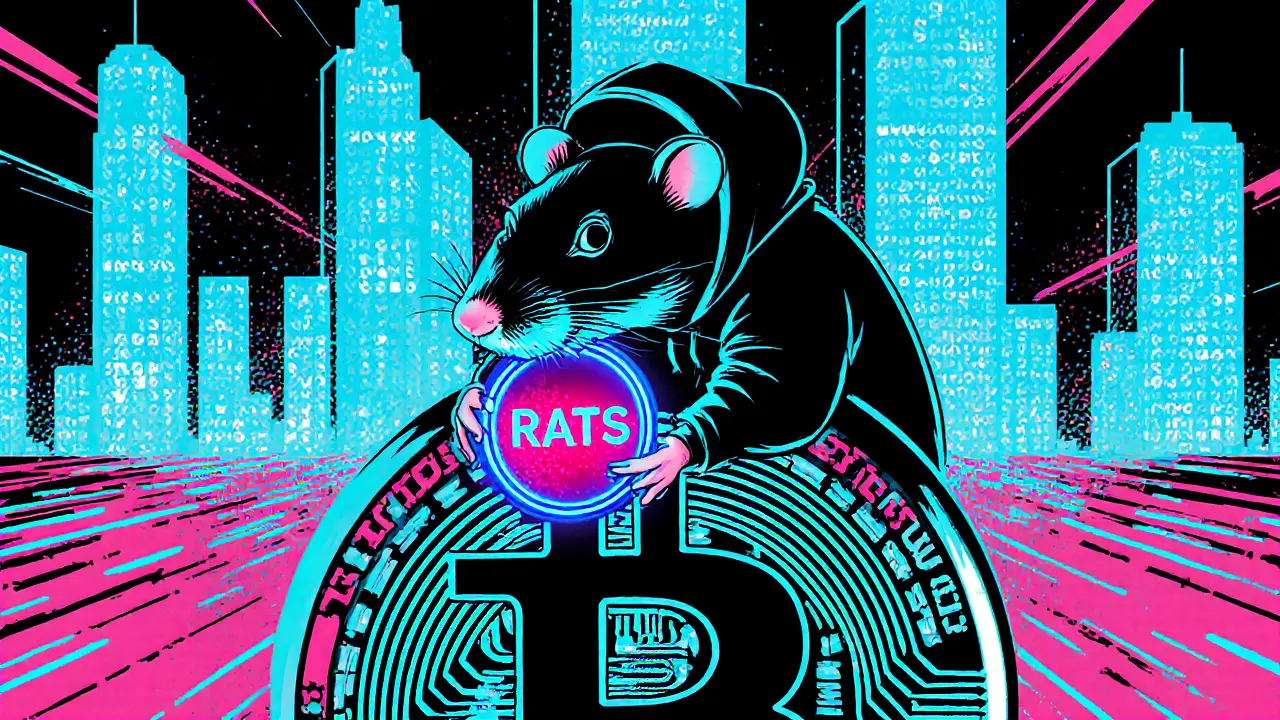Rats (RATS) Crypto Coin Explained - Bitcoin Ordinals Meme Token
Rats (RATS) is a Bitcoin Ordinals meme token launched in 2024. Learn how it works, its market data, risks, wallets, and future outlook.
Continue ReadingWhen working with Bitcoin Ordinals, a system that stamps data directly onto satoshis, turning plain Bitcoin units into collectible digital assets. Also known as BTC Ordinals, it lets creators and collectors treat each satoshi like a tiny canvas for art, memes, or even token‑gated access. This innovation blends the security of Bitcoin with the creativity of NFTs, opening a whole new market for crypto enthusiasts.
In the world of NFTs, unique tokens that represent ownership of digital or physical items have already reshaped art, gaming, and finance. When you inscribe an image onto a satoshi, you’re essentially minting an NFT on Bitcoin’s own ledger. Unlike Ethereum‑based NFTs, Ordinals don’t rely on smart contracts; they use the native transaction format, which many see as a more permanent, censorship‑resistant method of storage.
Because Bitcoin’s block size limit is smaller than many other chains, creators must be mindful of file size and compression. This constraint pushes designers toward minimalist art or clever data packing, producing a distinctive aesthetic that sets Ordinals apart from sprawling Ethereum collections.
Beyond aesthetics, NFTs on Bitcoin benefit from the network’s massive hash rate and long‑term stability. As a result, collectors often view Ordinals as a “digital gold” version of NFTs, hoping that the underlying security will preserve value even if the broader NFT market fluctuates.
Another key player in this space is the blockchain, the distributed ledger technology that records all Bitcoin transactions, including Ordinal inscriptions. The Bitcoin blockchain provides an immutable record, making it easy for anyone to verify an Ordinal’s provenance without trusting a third‑party marketplace. This transparency fuels trust, especially among users who grew skeptical of centralized NFT platforms after high‑profile hacks.
Understanding how the blockchain works helps you gauge transaction costs, confirmation times, and the long‑term durability of your Ordinals. For example, a spike in Bitcoin’s mempool can raise inscription fees, so timing your mint can save significant satoshis.
One often‑overlooked driver of Ordinal popularity is the crypto airdrop, a distribution of free tokens or NFTs to a community, usually as a marketing push or network incentive. Airdrops can seed interest in new Ordinal collections, reward early adopters, or even create a secondary market for rare inscriptions. When an airdrop includes an exclusive Ordinal, holders gain both a collectible and a potential utility token, blending scarcity with utility.
Recent airdrop projects have used Ordinals to embed access keys for private Discords, early‑beta apps, or exclusive merch drops. This hybrid approach spikes demand, because participants not only receive a free digital asset but also gain entry to a wider ecosystem.
Regulators are also watching this space closely. While Bitcoin itself enjoys a relatively clear legal status in many jurisdictions, NFTs tied to it can fall under securities or consumer‑protection laws, depending on how they’re marketed. Understanding the regulatory landscape helps you avoid pitfalls—especially if you plan to trade Ordinals on secondary markets or launch your own collection.
Security remains a top concern. Since Ordinals live on the Bitcoin blockchain, the primary risk is losing access to the private key that controls the satoshis holding your inscription. Hardware wallets, multi‑sig vaults, and proper backup procedures are essential. For institutions, hardware security modules (HSMs) provide an extra layer of protection, ensuring that private keys never leave a hardened environment.
Tools and platforms are emerging to simplify Ordinal creation and trading. Wallets like Xverse, Hiro, and Unisat now support direct inscription and display of Ordinals, while explorers such as ordinals.com let you browse the entire catalog of existing inscriptions. These services often include built‑in fee estimators, making it easier to plan your mint without overpaying.
From a market‑analysis perspective, sentiment drives price swings just as it does with Bitcoin itself. Positive news—like a major artist dropping an Ordinal series or a successful airdrop—can trigger rapid price appreciation. Conversely, regulatory crackdowns or high transaction fees can dampen enthusiasm. Tracking community chatter on Discord, Twitter, and niche forums gives you early signals about where the market might head next.
Trading strategies for Ordinals often mirror those for traditional NFTs: identify undervalued inscriptions, watch for upcoming utility announcements, and consider liquidity pools on emerging marketplaces. Some traders also flip Ordinals shortly after a pump in Bitcoin’s price, betting that increased network activity will raise the floor for all Bitcoin‑based assets.
In short, the Bitcoin Ordinals ecosystem intertwines NFTs, blockchain fundamentals, airdrop incentives, regulatory nuances, and market sentiment. The next sections of this page will dive deeper into each of those angles, giving you the context you need to make informed decisions.
Below you’ll find a curated list of articles that break down everything from how to participate in airdrops and secure your keys, to the latest governance trends and security tools that affect Ordinals. Dive in to get actionable insights and stay ahead of the curve.

Rats (RATS) is a Bitcoin Ordinals meme token launched in 2024. Learn how it works, its market data, risks, wallets, and future outlook.
Continue Reading
Learn what RATS (Ordinals) meme coin is, how it works on Bitcoin, where to buy it, its risks, and how it compares to other meme tokens.
Continue Reading